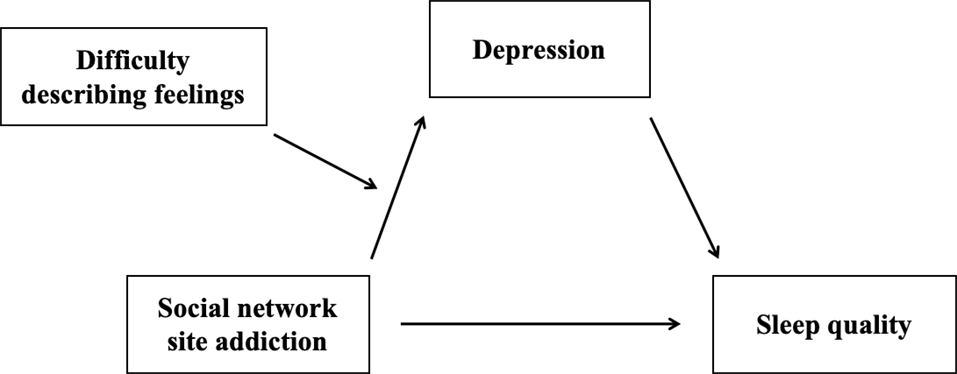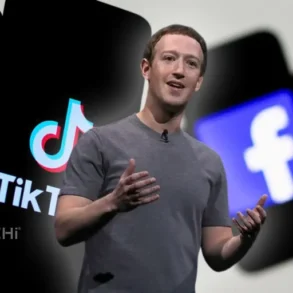
Harrington J, Lee-Chiong T. Basic biology of sleep. Dent Clin North Am. 2012;56(2):319–30.
Bruce ES, Lunt L, McDonagh JE. Sleep in adolescents and young adults. Clin Med (Lond). 2017;17(5):424–8.
Kopasz M, et al. Sleep and memory in healthy children and adolescents – a critical review. Sleep Med Rev. 2010;14(3):167–77.
Roberts RE, Roberts CR, Chen IG. Impact of insomnia on future functioning of adolescents. J Psychosom Res. 2002;53(1):561–9.
Tarokh L, Saletin JM, Carskadon MA. Sleep in adolescence: physiology, cognition and mental health. Neurosci Biobehav Rev. 2016;70:182–8.
Burnell K, et al. Associations between adolescents’ Daily Digital Technology Use and Sleep. J Adolesc Health. 2022;70(3):450–6.
Carskadon MA. Sleep in adolescents: the perfect storm. Pediatr Clin North Am. 2011;58(3):637–47.
Alvaro PK, Roberts RM, Harris JK. A systematic review assessing bidirectionality between sleep disturbances, anxiety, and Depression. Sleep. 2013;36(7):1059–68.
GREGORY AM, O’CONNOR TG. Sleep problems in Childhood: a Longitudinal Study of Developmental Change and Association with behavioral problems. J Am Acad Child Adolesc Psychiatry. 2002;41(8):964–71.
Lowe CJ, Safati A, Hall PA. The neurocognitive consequences of sleep restriction: a meta-analytic review. Neurosci Biobehav Rev. 2017;80:586–604.
Peach HD, Gaultney JF. Sleep, impulse control, and sensation-seeking predict delinquent behavior in adolescents, emerging adults, and adults. J Adolesc Health. 2013;53(2):293–9.
Alimoradi Z, et al. Internet addiction and sleep problems: a systematic review and meta-analysis. Sleep Med Rev. 2019;47:51–61.
Andreassen CS, Pallesen S. Social network site addiction – an overview. Curr Pharm Des. 2014;20(25):4053–61.
Vannucci A, et al. Social media use and risky behaviors in adolescents: a meta-analysis. Netherlands: Elsevier Science; 2020. pp. 258–74.
Caner N, Efe YS, Başdaş Ö. The contribution of social media addiction to adolescent LIFE: social appearance anxiety. Curr Psychol. 2022;41(12):8424–33.
Montag C, et al. Problematic social media use in childhood and adolescence. Addict Behav. 2024;153:107980.
Armstrong-Carter E, et al. Momentary links between adolescents’ social media use and social experiences and motivations: individual differences by peer susceptibility. Dev Psychol. 2023;59(4):707–19.
Cheng C, et al. Prevalence of social media addiction across 32 nations: Meta-analysis with subgroup analysis of classification schemes and cultural values. Addict Behav. 2021;117:106845.
Akhtar N et al. Unveiling mechanism of SNSs addiction on wellbeing: the moderating role of loneliness and social anxiety. Behav Inform Technol, 2024: pp. 1–20. https://doi.org/10.1080/0144929X.2024.2417390.
Wang W, et al. Cyberbullying and depression among Chinese college students: a moderated mediation model of social anxiety and neuroticism. J Affect Disord. 2019;256:54–61.
Hussain Z, Griffiths MD. The associations between problematic social networking site use and sleep quality, attention-deficit hyperactivity disorder, depression, anxiety and stress. Germany: Springer; 2021. pp. 686–700.
Alonzo R, et al. Interplay between social media use, sleep quality, and mental health in youth: a systematic review. Elsevier Science: Netherlands; 2021.
Touitou Y, Touitou D, Reinberg A. Disruption of adolescents’ circadian clock: the vicious circle of media use, exposure to light at night, sleep loss and risk behaviors. J Physiol Paris. 2016;110(4 Pt B):467–79.
Chen YL, Gau SS. Sleep problems and internet addiction among children and adolescents: a longitudinal study. J Sleep Res. 2016;25(4):458–65.
Lu B, Lin L, Su X. Global burden of depression or depressive symptoms in children and adolescents: a systematic review and meta-analysis. J Affect Disord. 2024;354:553–62.
Clark MS, Jansen KL, Cloy JA. Treatment of childhood and adolescent depression. Am Fam Physician. 2012;86(5):442–8.
Carli V, et al. The association between pathological internet use and comorbid psychopathology: a systematic review. Psychopathology. 2013;46(1):1–13.
Steffen A, et al. Mental and somatic comorbidity of depression: a comprehensive cross-sectional analysis of 202 diagnosis groups using German nationwide ambulatory claims data. BMC Psychiatry. 2020;20(1):142.
Na E et al. Acceptance and Commitment Therapy for destructive experiential avoidance (ACT-DEA): a feasibility study. Int J Environ Res Public Health, 2022. 19(24).
Liu C, Liu Z, Yuan G. Cyberbullying victimization and problematic internet use among Chinese adolescents: longitudinal mediation through mindfulness and depression. J Health Psychol. 2021;26(14):2822–31.
Yang X, et al. A bidirectional association between internet addiction and depression: a large-sample longitudinal study among Chinese university students. J Affect Disord. 2022;299:416–24.
Wartberg L, et al. A longitudinal study on psychosocial causes and consequences of internet gaming disorder in adolescence. Psychol Med. 2019;49(2):287–94.
Ohayon MM, Caulet M, Lemoine P. Comorbidity of mental and insomnia disorders in the general population. Compr Psychiatry. 1998;39(4):185–97.
Goodyer IM, et al. Cognitive-behavioural therapy and short-term psychoanalytic psychotherapy versus brief psychosocial intervention in adolescents with unipolar major depression (IMPACT): a multicentre, pragmatic, observer-blind, randomised controlled trial. Health Technol Assess. 2017;21(12):1–94.
Morphy H, et al. Epidemiology of insomnia: a longitudinal study in a UK population. Sleep. 2007;30(3):274–80.
Patten CA, et al. Depressive symptoms and cigarette smoking predict development and persistence of sleep problems in US adolescents. Pediatrics. 2000;106(2):E23.
Riemann D, et al. The hyperarousal model of insomnia: a review of the concept and its evidence. Sleep Med Rev. 2010;14(1):19–31.
Moulton CD, Pickup JC, Ismail K. The link between depression and diabetes: the search for shared mechanisms. Lancet Diabetes Endocrinol. 2015;3(6):461–71.
Preece DA, et al. What is alexithymia? Using factor analysis to establish its latent structure and relationship with fantasizing and emotional reactivity. J Pers. 2020;88(6):1162–76.
Sifneos PE. The prevalence of ‘alexithymic’ characteristics in psychosomatic patients. Psychother Psychosom. 1973;22(2):255–62.
Ricciardi L, et al. Alexithymia in Neurological Disease: a review. J Neuropsychiatry Clin Neurosci. 2015;27(3):179–87.
Taylor GJ, Bagby RM, Parker JDA. Disorders of affect regulation: Alexithymia in medical and psychiatric illness., in Disorders of affect regulation: Alexithymia in medical and psychiatric illness. 1997, Cambridge University Press: New York, NY, US. p. xxii, 359-xxii, 359.
De Gucht V, Heiser W. Alexithymia and somatisation: a quantitative review of the literature. J Psychosom Res. 2003;54(5):425–34.
Celikel FC, et al. Alexithymia and temperament and character model of personality in patients with major depressive disorder. Compr Psychiatry. 2010;51(1):64–70.
Kyranides MN, Christofides D, Çetin M. Difficulties in facial emotion recognition: taking psychopathic and alexithymic traits into account. BMC Psychol. 2022;10(1):239.
Philippot P, Feldman RS. Age and social competence in preschoolers’ decoding of facial expression. Br J Soc Psychol. 1990;29(Pt 1):43–54.
Martini M, et al. Association of emotion recognition ability and interpersonal emotional competence in anorexia nervosa: a study with a multimodal dynamic task. Int J Eat Disord. 2023;56(2):407–17.
Kraut R, et al. Internet paradox revisited. United Kingdom: Blackwell Publishing; 2002. pp. 49–74.
Marchesi C, et al. The TAS-20 more likely measures negative affects rather than alexithymia itself in patients with major depression, panic disorder, eating disorders and substance use disorders. Compr Psychiatry. 2014;55(4):972–8.
Elphinston RA, Noller P. Time to face it! Facebook intrusion and the implications for romantic jealousy and relationship satisfaction. Cyberpsychol Behav Soc Netw. 2011;14(11):631–5.
Wei Q, Negative Emotions and Problematic Social Network Sites Usage.: The mediating role of fear of missing out and the moderating role of gender, 2018, Central China Normal University.
Liu Y, et al. The chain mediating effect of anxiety and inhibitory control between bullying victimization and internet addiction in adolescents. Sci Rep. 2024;14(1):23350.
Liu Y et al. The relationship between physical activity and internet addiction among adolescents in western China: a chain mediating model of anxiety and inhibitory control. Psychol Health Med. 2024;29(9):1–17. https://doi.org/10.1080/13548506.2024.2357694.
Murphy KR, Davidshofer CO. Psychological testing: Principles and applications., in Psychological testing: Principles and applications. 1994, Prentice-Hall, Inc: Englewood Cliffs, NJ, US. p. xi, 548-xi, 548.
Hosseinkhani Z, et al. Academic stress and adolescents Mental Health: a Multilevel Structural equation modeling (MSEM) Study in Northwest of Iran. J Res Health Sci. 2020;20(4):e00496.
Zimmerman M, et al. Developing brief scales for use in clinical practice: the reliability and validity of single-item self-report measures of depression symptom severity, psychosocial impairment due to depression, and quality of life. J Clin Psychiatry. 2006;67(10):1536–41.
Gogol K, et al. My questionnaire is too long! The assessments of motivational-affective constructs with three-item and single-item measures. Contemp Educ Psychol. 2014;39(3):188–205.
Postmes T, Haslam SA, Jans L. A single-item measure of social identification: reliability, validity, and utility. Br J Soc Psychol. 2013;52(4):597–617.
National Center for Health Statistics. (2000). Inadequate Sleep Optional Module. National Health Interview Survey 2000. Retrieved from https://www.cdc.gov/sleep/surveillance.html
Snyder E, et al. A new single-item Sleep Quality Scale: results of psychometric evaluation in patients with chronic primary insomnia and depression. J Clin Sleep Med. 2018;14(11):1849–57.
Waasdorp TE, et al. Health-related risks for involvement in bullying among Middle and High School Youth. J Child Fam stud. 2019;28(9):2606–17.
Lovibond PF, Lovibond SH. The structure of negative emotional states: comparison of the Depression anxiety stress scales (DASS) with the Beck Depression and anxiety inventories. Behav Res Ther. 1995;33(3):335–43.
Gong X et al. Psychometric properties of the Chinese versions of DASS-21 in Chinese college students. Chin J Clin Psychol, 2010;18(4):443–446. https://doi.org/10.16128/j.cnki.1005-3611.2010.04.020.
Liu Y, et al. Anxiety, inhibitory control, physical activity, and internet addiction in Chinese adolescents: a moderated mediation model. BMC Pediatr. 2024;24(1):663.
Shen Q, et al. The chain mediating effect of psychological inflexibility and stress between physical exercise and adolescent insomnia. Sci Rep. 2024;14(1):24348.
Bagby RM, Parker JD, Taylor GJ. The twenty-item Toronto Alexithymia Scale–I. item selection and cross-validation of the factor structure. J Psychosom Res. 1994;38(1):23–32.
Zhu X, et al. Cross-cultural validation of a Chinese translation of the 20-item Toronto Alexithymia Scale. Compr Psychiatry. 2007;48(5):489–96.
Liu Y, et al. The mediating effect of internet addiction and the moderating effect of physical activity on the relationship between alexithymia and depression. Sci Rep. 2024;14(1):9781.
Gong Xu, Xie Xiyao, Xu Rui, et al. The Chinese Version of the Depression Anxiety Stress Scales-21 (DASS-21) in Chinese university students: a test report [J]. Chinese J Clin Psyc. 2010;18(04):443–446. https://doi.org/10.16128/j.cnki.1005-3611.2010.04.020.
Podsakoff PM, et al. Common method biases in behavioral research: a critical review of the literature and recommended remedies. J Appl Psychol. 2003;88(5):879–903.
Hayes AF. Partial, conditional, and moderated moderated mediation: quantification, inference, and interpretation. Routledge, 2018(1).
Berkovits I, Hancock GR, Nevitt J. Bootstrap resampling approaches for repeated measure designs: relative robustness to sphericity and normality violations. Sage Publications: US; 2000. pp. 877–92.
Lam LT. Internet gaming addiction, problematic use of the internet, and sleep problems: a systematic review. Curr Psychiatry Rep. 2014;16(4):444.
Sampasa-Kanyinga H, Hamilton HA, Chaput JP. Use of social media is associated with short sleep duration in a dose-response manner in students aged 11 to 20 years. Acta Paediatr. 2018;107(4):694–700.
Hale L, et al. Youth screen Media habits and Sleep: sleep-friendly screen behavior recommendations for clinicians, educators, and parents. Child Adolesc Psychiatr Clin N Am. 2018;27(2):229–45.
van der Lely S, et al. Blue blocker glasses as a countermeasure for alerting effects of evening light-emitting diode screen exposure in male teenagers. J Adolesc Health. 2015;56(1):113–9.
Fossum IN, et al. The association between use of electronic media in bed before going to sleep and insomnia symptoms, daytime sleepiness, morningness, and chronotype. Behav Sleep Med. 2014;12(5):343–57.
Van den Bulck J. Is television bad for your health? Behavior and body image of the adolescent couch potato. Germany: Springer; 2000. pp. 273–88.
Twenge JM, Krizan Z, Hisler G. Decreases in self-reported sleep duration among U.S. adolescents 2009–2015 and association with new media screen time. Sleep Med. 2017;39:47–53.
Wong HY et al. Relationships between Severity of Internet Gaming Disorder, Severity of Problematic Social Media Use, Sleep Quality and Psychological Distress. Int J Environ Res Public Health, 2020. 17(6).
Lovato N, Gradisar M. A meta-analysis and model of the relationship between sleep and depression in adolescents: recommendations for future research and clinical practice. Sleep Med Rev. 2014;18(6):521–9.
Ford BQ, et al. The psychological health benefits of accepting negative emotions and thoughts: Laboratory, diary, and longitudinal evidence. J Pers Soc Psychol. 2018;115(6):1075–92.
Asarnow LD. Depression and sleep: what has the treatment research revealed and could the HPA axis be a potential mechanism? Curr Opin Psychol. 2020;34:112–6.
Reynolds CR, Kupfer DJ. Sleep research in affective illness: state of the art circa 1987. Sleep. 1987;10(3):199–215.
Yasugaki S et al. Bidirectional relationship between sleep and depression. Neurosci Res, 2023;S0168-0102(23):00087-1. https://doi.org/10.1016/j.neures.2023.04.006.
Perez-Caballero L, et al. Monoaminergic system and depression. Cell Tissue Res. 2019;377(1):107–13.
Takahashi K, et al. Locus coeruleus neuronal activity during the sleep-waking cycle in mice. Neuroscience. 2010;169(3):1115–26.
Sakurai T. The neural circuit of orexin (hypocretin): maintaining sleep and wakefulness. Nat Rev Neurosci. 2007;8(3):171–81.
Shariq AS, et al. Evaluating the role of orexins in the pathophysiology and treatment of depression: a comprehensive review. Prog Neuropsychopharmacol Biol Psychiatry. 2019;92:1–7.
Hasking P, et al. A cognitive-emotional model of NSSI: using emotion regulation and cognitive processes to explain why people self-injure. Cogn Emot. 2017;31(8):1543–56.
Foran HM, O’Leary KD. The role of relationships in understanding the alexithymia–depression link. John Wiley & Sons: US; 2013. pp. 470–80.
Kieraité M, et al. Our similarities are different the relationship between alexithymia and depression. Psychiatry Res. 2024;340:116099.
Spitzer C, et al. Alexithymia and interpersonal problems. Psychother Psychosom. 2005;74(4):240–6.
Morie KP, et al. The process of emotion identification: considerations for psychiatric disorders. J Psychiatr Res. 2022;148:264–74.
Luminet O, Nielson KA, Ridout N. Cognitive-emotional processing in alexithymia: an integrative review. Cogn Emot. 2021;35(3):449–87.
Selby EA, Joiner TJ. Cascades of emotion: the emergence of Borderline personality disorder from emotional and behavioral dysregulation. Rev Gen Psychol. 2009;13(3):219.
Morie KP, Alexithymia E-R, et al. Strategies, and traumatic experiences in prenatally Cocaine-exposed young adults. Am J Addict. 2020;29(6):492–9.
AGNEW R. FOUNDATION FOR A GENERAL STRAIN THEORY, OF CRIME AND DELINQUENCY. Criminology. 1992;30(1):47–88.
Xiao W, et al. Why are individuals with alexithymia symptoms more likely to have Mobile phone addiction? The multiple mediating roles of Social Interaction Anxiousness and Boredom Proneness. Psychol Res Behav Manag. 2021;14:1631–41.
Bamonti PM, et al. Association of alexithymia and depression symptom severity in adults aged 50 years and older. Am J Geriatr Psychiatry. 2010;18(1):51–6.
This post was originally published on this site be sure to check out more of their content







